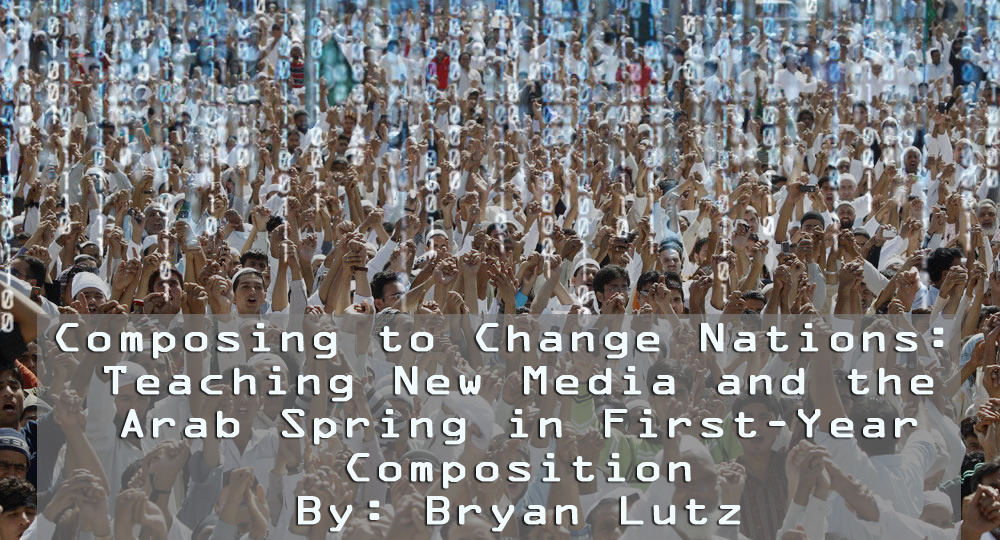Print References
Bloch, J. (2007). Abdullah's Blogging: A Generation 1.5 Student Enters The Blogosphere. Language Learning & Technology. The Ohio State University.
Chong, E. M. (2010). Using blogging to enhance the initiation of students into academic research. Computers & Education, 55(2), 798-807. doi:10.1016/j.compedu.2010.03.012
Deng, L., & Yuen, A. K. (2011). Towards a framework for educational affordances of blogs. Computers & Education, 56(2), 441-451. doi:10.1016/j.compedu.2010.09.005
Dadas, Caroline E. (2008). Inventing the Election: Civic Participation and Presidential Candidates’ Websites. Computers & Composition 25(4), 416-431.
Downes, S. (2006). Learning Networks and Connective Knowledge. Retrieved 10 May, 2008, from http://it.coe.uga.edu/itforum/paper92/paper92.html
Eble, M. F., & Gaillet, L. (2004). Educating "Community Intellectuals": Rhetoric, Moral Philosophy, and Civic Engagement. Technical Communication Quarterly, 13(3), 341- 354.
Fenton, N. (2008). Mediating hope: New media, politics and resistance. International Journal Of Cultural Studies, 11(2), 230-248. doi:10.1177/1367877908089266
Ferdig, R. E., & Trammell, K. D. (2004). Content Delivery in the 'Blogosphere'. T H E Journal, 31(7), 12-20.
Gandio, J. D. (2008). Global Justice Rhetoric: Observations and Suggestions. Ephemera: Theory and Politics Organization. Ephemera.org. Retrieved from Web. 10 May 2011.
<http://www.ephemeraweb.org/journal/8-2/8-2ephemera-may08.pdf#page=55.>.
Harkavy, I., & Hartley, M. (2010). Pursuing Franklin's Dream: Philosophical and Historical Roots of Service-Learning. American Journal Of Community Psychology, 46(3/4), 418- 427. doi:10.1007/s10464-010-9341-x
Head, A., and Eisenberg, M. (2010) Truth Be Told: How College Students Evaluate. Publication. Information School University of Washington, 2010. Print.
Hesford, W. S. (2006). Global Turns and Cautions in Rhetoric and Composition Studies. PMLA: Publications Of The Modern Language Association Of America, 121(3), 787-801.
Hutchinson, M. (2005). Living the Rhetoric: Service Learning and Increased Value of Social Responsibility. Pedagogy, 5(3), 427-444.
Klandermans, B., & Oeogema, D. (1987). POTENTIALS, NETWORKS, MOTIVATIONS, AND BARRIERS: STEPS TOWARDS PARTICIPATION IN SOCIAL MOVEMENTS. American Sociological Review, 52(4), 519-531.
Lowe, C., and Williams, T. (2004) Moving to the Public: Weblogs in the Writing Classroom. Weblog post. Into The Blogosphere. University of Minnesota. Web. 10 May 2010. <http://blog.lib.umn.edu/blogosphere/>.
Manovich, L. (2001). The Language of New Media. Cambridge, MA: MIT Press, Print.
Maranto, G., & Barton, M. (2010). Paradox and Promise: MySpace, Facebook, and the Sociopolitics of Social Networking in the Writing Classroom. Computers & Composition, 27(1), 36-47. doi:10.1016/j.compcom.2009.11.003
Maheo, V., Hooghe, M., Vissers, S., & Stolle, D., (2010). The Potential of Internet Mobilization: An Experimental Study on the Effect of Internet and Face-to-Face Mobilization Efforts. Political Communication, 27(4), 406-431. doi:10.1080/10584609.2010.516799
Pandey, I. (2007). "Saving, Sharing, Citing, and Publishing Multimodal Texts." Ed. Cynthia L. Selfe. Multimodal Composition: Resources for Teachers. (pp. 65-82) Cresskill, NJ: Hampton, Print.
Ramage, J. D., Bean J. C., and Johnson, J. (2009) Allyn & Bacon Guide to Writing. 5th ed. New York: Pearson Longman, Print.
Scott, J. (2004). Rearticulating Civic Engagement Through Cultural Studies and Service- Learning. Technical Communication Quarterly, 13(3), 289-306.
Selfe, C., Hawisher, G., with Lashore, Oladipupo; and Song, Pengfei. (2006). "Literacies and the complexities of the global digital divide." Ed. Susan Miller The Norton book of composition studies (pp. 1499-1531). New York: W.W. Norton & Co, Print.
Selfe, D. "Techno-Pedagogical Explorations: Toward Sustainable Technology-Rich Instruction." (2003) Teaching Writing with Computers: an Introduction. Ed. Pamela Takayoshi and Brian Huot. Boston: Houghton Mifflin, Print.
Smith, P. J. (2003). Social Activism and the Internet. Labour / Le Travail, 51 265-269.
Sorapure, M. "Five Priniciples of New Media: Or, Playing Lev Manovich." Issue 16.1 (Fall 2011) - Kairos: A Journal of Rhetoric, Technology, and Pedagogy. Kairos, 2003. Web. 18 Mar. 2010. <http://kairos.technorhetoric.net/8.2/coverweb/sorapure/>.
Takayoshi, P., Selfe, C."Thinking about Multimodality." (2007). Ed. Cynthia L. Selfe. Multimodal Composition: Resources for Teachers. (pp. 1-12) Cresskill, NJ: Hampton, Print.
Tryon, C. (2006). Writing and Citizenship: Using Blogs to Teach First-Year Composition. Pedagogy, 6(1), 128-132.
Turnley, M. (2007). Integrating Critical Approaches to Technology and Service-Learning Projects. Technical Communication Quarterly, 16(1), 103-123.
Vie, S. (2008). Digital Divide 2.0: “Generation M” and Online Social Networking Sites in the Composition Classroom. Computers & Composition, 25(1), 9-23. doi:10.1016/j.compcom.2007.09.004
Wysocki, A. et al. Writing New Media. (pp. 1-37) Logan, Utah: Utah University Press, 2004. Print.
